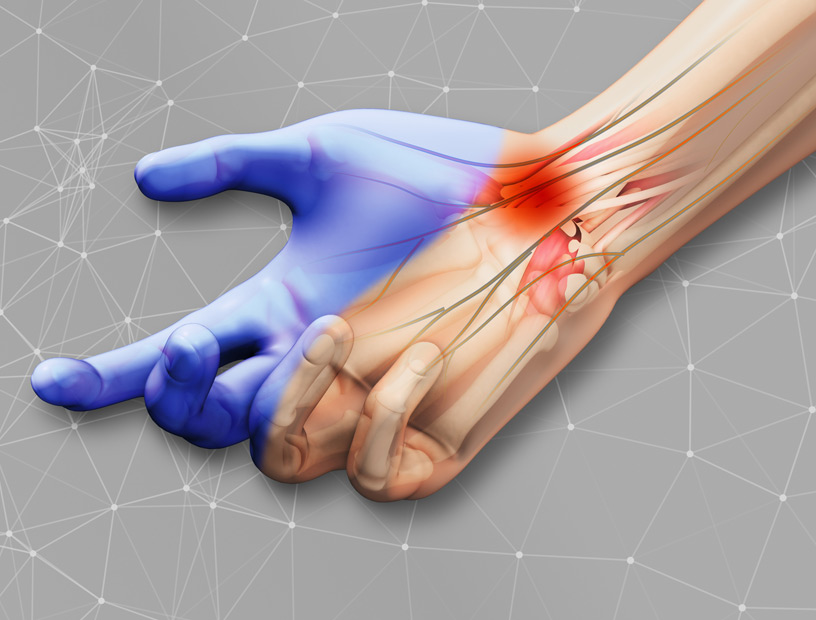
Discover how carpal tunnel release could help you restore mobility.
Carpal tunnel syndrome is a disorder that occurs when the median nerve in your lower arm and hand becomes squeezed or compressed at the wrist. This nerve controls the sensations and movement of your thumb and three longest fingers. The carpal tunnel is where the median nerve and some of your hand’s tendons are located. Tendinitis and arthritis may cause swelling that narrows the tunnel.
- Your compressed nerve may cause you to experience pain, weakness, or tingling in your hand and wrist
- A carpal tunnel release may be performed by an orthopedic surgeon after conservative measures do not provide you with any relief of your symptoms
How a Carpal Tunnel Release Procedure Works
In a carpal tunnel release surgery, the doctor will deliver a numbing medication into your arm so that you do not feel any pain during the procedure. You may also receive a sedative that relaxes you. The doctor then makes a small incision into the palm of your hand, close to your wrist. An endoscope is used to provide clear images of your carpal tunnel. Those images are shown on a monitor in the operating suite. This endoscopic technique allows the surgeon to see if there are any other problems within your wrist.
The ligament covering your carpal tunnel is cut in order to ease the pressure on your median nerve. If necessary, the surgeon will also remove some soft tissue. The tissue is stitched back together and the incision is also closed with stitches.
After surgery, you may be given a wrist brace for a few weeks to limit movement of your hand. Once the incision heals, you may begin physical therapy or occupational therapy in order to regain full strength and range of motion of your wrist and fingers. You may also be given some stretching exercises to do at home.
Carpal-Tunnel-Release-Tustin-Orthopedic-2 Conditions for Which a Carpal Tunnel Release Is Used

A carpal tunnel release surgery is used for patients with carpal tunnel syndrome. If your median nerve is damaged due to another reason, this surgery may be performed to treat that condition. Some other conditions that may cause damage to the median nerve include the growth of a tumor, a fractured carpal bone, a bone spur or trauma to your arm, wrist or hand.
Who is a Candidate for a Carpal Tunnel Release?
You may be a candidate for a carpal tunnel release surgery if you have already tried non-surgical treatments and not experienced any relief of your symptoms. The non-surgical treatments that are commonly used to lessen carpal tunnel syndrome symptoms include wrist splints, hand exercises, anti-inflammatory medications, and injections of a corticosteroid medication into your carpal tunnel.
If you have worsening symptoms or an EKG test shows that your median nerve has decreasing electrical activity, your orthopedic surgeon may recommend that you have a carpal tunnel release as quickly as possible. You are also a candidate for a carpal tunnel release if your median nerve is being pinched due to other arm disorders.

on caring for specific orthopedic needs.
